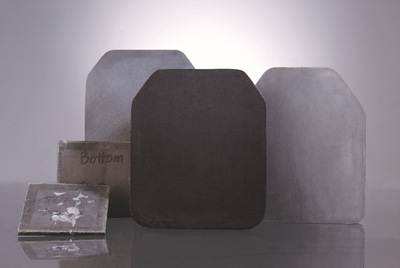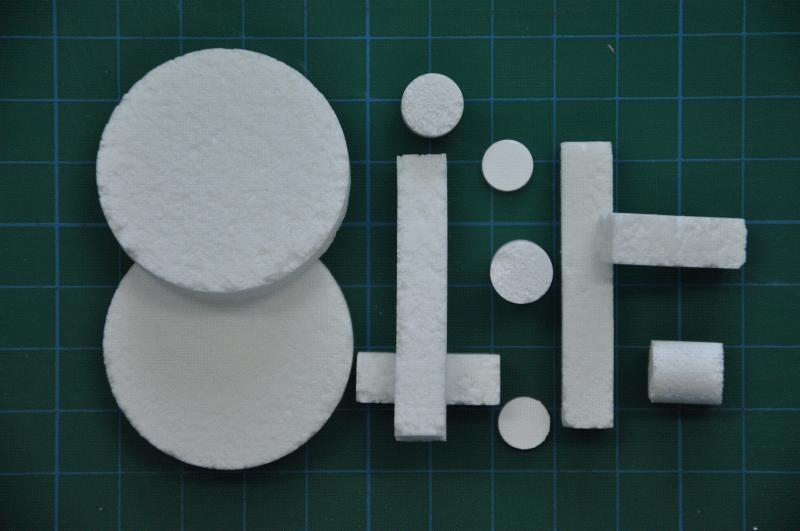A polarised piezoelectric ceramic with electrodes can deform if a force is applied to it and produce electrical effects (such as discharge or charging). On the contrary, if a voltage is applied to the electrode of the ceramic chip, the ceramic chip will produce a deformation effect. This electrical effect due to deformation is called normal piezoelectric effect. The deformation effect due to the applied voltage is called the inverse piezoelectric effect. The piezoelectric effect reflects the linear coupling relation between pressure and electricity. Piezoelectric ceramics have a piezoelectric effect, which is determined by the structure of the piezoelectric ceramic itself, that is, its internal structure.
1. Internal structure of piezoelectric ceramics
(1) Piezoelectric ceramics are polycrystalline
After a piece of piezoelectric ceramics has been ground, polished and corroded, it can be clearly seen under a microscope that the whole ceramic body is composed of irregular "Mosaic" of small grains. Piezoelectric ceramics are composed of many small grains, in which the atoms are arranged regularly, but the crystal lattice direction of this grain is not necessarily the same as that of that grain. Therefore, on the whole, it is still chaotic and irregular, and this structure can be called polycrystal.

Crystal orientation of piezoelectric ceramic grains
(2) Internal structure of crystal
The common feature of the crystal structure is the periodic repetitive arrangement of the unit cells. Different types of crystals have different unit cell sizes, shapes, and atoms constituting the unit cell. If distinguished from the shape of the unit cell ( symmetry), thousands of crystals in the objective world can be classified into 32 symmetry types, of which there are 20 types of piezoelectric crystals.
At present, the most widely used piezoelectric ceramics belong to perovskite (CaTiO3) structure, such as barium titanate (BaTiO3) and titanate lead (PbTiO3), etc. Their common characteristic is the chemical molecular formula can be written in the same form as ABO3. The corresponding ions are arranged in the same position in the cell. A ion is located in the vertex angle of the hexahedron, oxygen ion is located in the six face centers of the hexahedron, and B ion is located in the center of the hexahedron. The whole grain is made up of repeated arrangement of such cells.
In fact, in addition to a single compound (such as BaTiO3 ceramic or PbTiO3 ceramic), the piezoelectric ceramic materials currently produced can also be formed by two or more ABO3 forms (some of which are not ABO3 forms) compounds. The solid solution. For example, the most widely used lead zirconate titanate (PZT) is the solid solution of lead zirconate-lead titanate.
(3) The crystal structure changes with temperature
The crystal structure of piezoelectric materials is not static, it will change with temperature, from quantity to quality. For ABO3 crystals with a perovskite structure, such as BaTiO3 and PbTiO3, when the temperature is higher than the phase transition temperature, the crystal lattice is a cubic crystal system without piezoelectric effect. The transformation from one crystal system to another causes a qualitative change in the structure, which physics calls a phase change. Because it is in a solid state before and after the phase transition, it is also called "solid-solid phase transition".
Tc is called phase transition humidity. For piezoelectric ceramics, there is no piezoelectric effect above Tc. Below Tc, there is a piezoelectric effect, so Tc is also called curie temperature.
Piezoelectric ceramics made of different materials (even when the same material contains different impurities) have different curie temperatures. When the temperature is equal to the curie temperature, the crystal lattice changes suddenly, that is, it changes from one crystal system to another.
Declaration: This article is provided by CERADIR™ users or obtained from Internet, the content does not represent the position of CERADIR™. We are not responsible for the authenticity/accuracy of the article, especially the effects of the products concerned. This article is for study only, it does not constitute any investment or application advice. For reprinting, please contact the original author. If it involves the copyright and/or other issues, please contact us and we will deal with it asap! CERADIR™ has the interpretation of this declaration.







